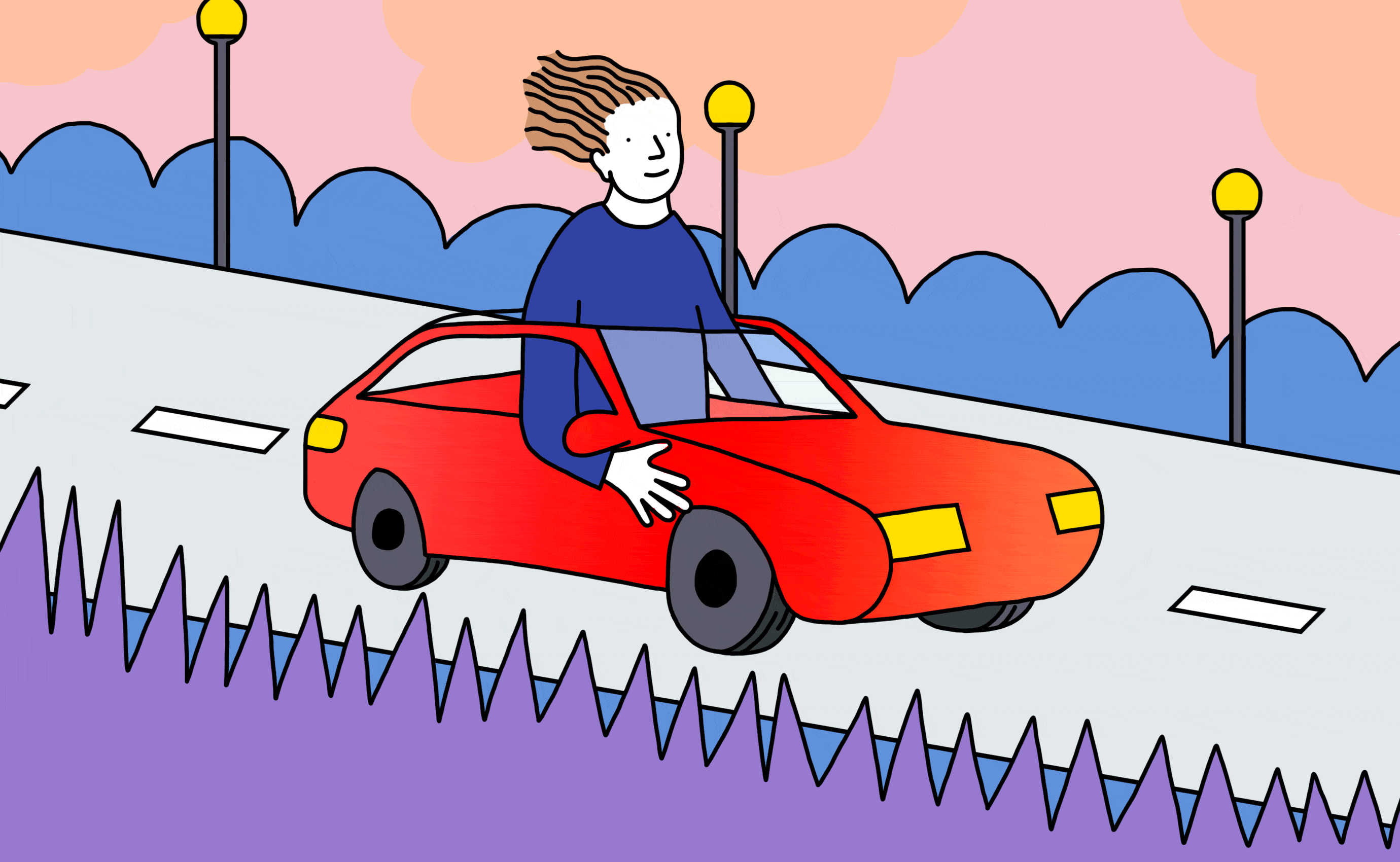This startup hopes to keep barf bags out of self-driving cars

Fully autonomous cars could make your travel time a lot more productive in the coming years—just think of all the things you could do if you didn’t have to pay attention to driving. But not if you’re throwing up the entire time.
Though they’re not that common yet, self-driving cars are moving toward consumer use, with companies like Google’s Waymo testing them out on public roads. And these cars are likely to inflate the problem of motion sickness, which is caused when a person’s eyes and inner ears send conflicting signals to the brain: the ear detects the motion of the automobile, but the eye sees the stationary surroundings of the interior.
Driving helps mitigate the effects because it helps to constantly observe outside movement, but autonomous cars would take that crutch away. Without the need for a driver, it may also be more challenging for passengers to anticipate the car’s motion and more likely that riders will be facing backwards or sideways rather than straight ahead—both things that can make you want to hurl.
Motion sickness might already be affecting you in small ways without your realizing it. Ever feel drowsy or get a headache or eyestrain while in a car? Jim Lackner, a professor of physiology at Brandeis University, says these may often be symptoms of low-grade motion sickness, and it could get worse as companies start rolling out cars that can drive us around without any help.
A startup called ClearMotion sees this as a massive impending problem, and it has a possible solution: technology to cancel out the movements of the car that let your inner ear know your body is in motion.
To make this work, the Boston-area company uses something called an activalve, an electro-hydraulic device that mounts on the shock absorbers of all four wheels. It anticipates driver and road inputs in order to stop vibrations before they occur. Less than five milliseconds after the wheels begin to move, the devices work together to counter the motion, filtering out the vibrations that instigate motion sickness and creating a much smoother ride.
It’s not the first time researchers have looked to stop nausea by targeting the car’s movements, but previous efforts focused on low-frequency vibrations. ClearMotion believes that both high- and low-frequency vibrations have to be canceled to stop motion sickness, and it designed its activalve to do so.
Its research shows this seems to work. A paper the company published in 2016 found that seven of nine people who experienced some degree of motion sickness in their control test experienced little to no nausea when the devices were activated.
I wanted to test it out for myself, but I don’t get carsick. Fortunately, I work with someone who does: Joyce Chen, MIT Technology Review’s partner relationship manager and a lifelong motion-sickness sufferer.
Since ClearMotion’s vibration-filtering technology is currently only operating in a lab-based car simulation, Chen and I headed over to the company’s office in Woburn, Massachusetts, to check it out. There, we sat in a normal-looking white BMW 535xi that mimicked the movement of a car going over a particularly nauseating New Hampshire road, both with and without ClearMotion’s filters applied. In both modes, Chen and I took turns trying to read a technical paper—about, no surprise, motion sickness—in the back seat.
The difference in ride smoothness was immediately obvious to both of us, and I could see how it might make for a more comfortable ride even for people like me. Although I could still feel some vibrations when the filters were applied, ClearMotion cofounder Zack Anderson says this is not something the startup is trying to minimize much more; apparently, riders prefer some small vibrations. ClearMotion just has to make sure they are not in the range that causes motion sickness.
When Chen went through the first control test for a few minutes, she felt a bit of discomfort that she thought would probably have gotten a lot worse over time. On the second run, with the nausea-canceling technology enabled, she felt better, but not perfect.
“I would put down major cash if they can do everything they are promising,” she said.
The technology is still undergoing tests, and ClearMotion is still tweaking the algorithms that monitor and counter the vomit-inducing vibrations. It will be entering the field soon, though: the company is now working with six partners to test its devices on several brands and varieties of vehicles.
Anderson anticipates that ClearMotion will be available for widespread use within a couple of years. The company is also working on making it more comfortable for human-driven cars—which makes sense, since it could be a while longer before an autonomous car is anywhere close to your driveway.
Keep Reading
Most Popular
Large language models can do jaw-dropping things. But nobody knows exactly why.
And that's a problem. Figuring it out is one of the biggest scientific puzzles of our time and a crucial step towards controlling more powerful future models.
How scientists traced a mysterious covid case back to six toilets
When wastewater surveillance turns into a hunt for a single infected individual, the ethics get tricky.
The problem with plug-in hybrids? Their drivers.
Plug-in hybrids are often sold as a transition to EVs, but new data from Europe shows we’re still underestimating the emissions they produce.
Stay connected
Get the latest updates from
MIT Technology Review
Discover special offers, top stories, upcoming events, and more.